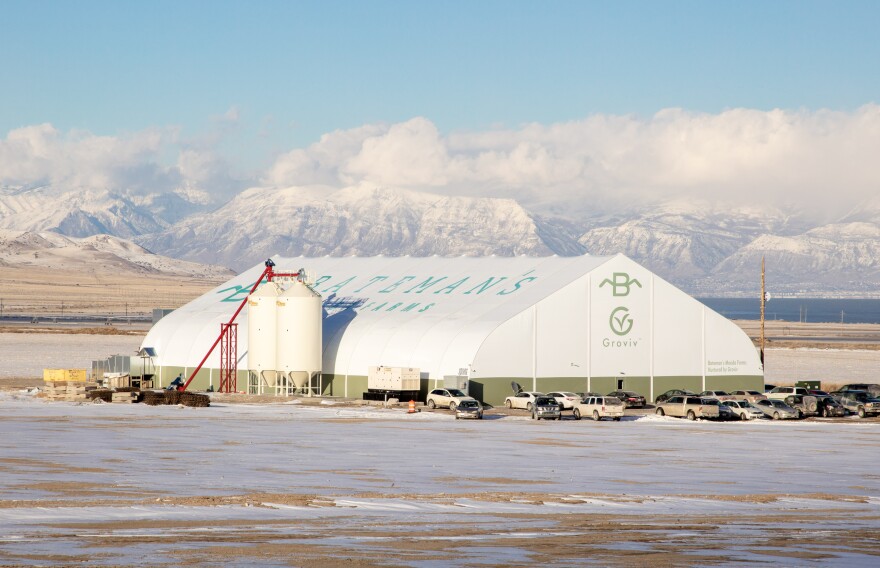Farmers are facing a problem of feeding an ever-growing human population with shrinking supplies of land and water.
At least, that's the argument Utah-based Grōv Technologies is making. The company developed the Olympus Tower Farm, which it describes as the “world’s largest, most advanced indoor vertical farming system for year-round fresh animal feed.”
A tower consists of floor-to-ceiling trays on conveyor belts, and one can produce 5,000 to 6,000 pounds of animal feed per day. That’s the equivalent production of 35 to 50 acres of conventional fields — with only 5% of the water, according to the company’s president Steve Lindsley.
In a December interview with KUER, Lindsley pointed out another benefit of the indoor farming system.
“Today, we’re supposed to get some snow,” he said. “And the animals will be eating as if it was early June out on a pasture because we’re able to feed them this fresh product.”

Grōv Technologies’ first adopter is Bateman's Mosida Farms in Utah County. The family-owned farm is the largest dairy operation in the state. Co-owner Brad Bateman said the system they installed offered their farm numerous benefits, ranging from localizing their supply chain to reducing their carbon footprint. He added, however, that any agricultural producer makes the decision to adopt new technology for a very practical reason.
“We’re a business,” he said. “So it has to make sense from the financial end.”
In their case, the savings on land and water expenses justified the investment, Bateman said.
When asked whether he would recommend the system to other cattle operations, Bateman said the system’s utility ought to be evaluated on a case-by-case basis.
For example, an Olympus Tower Farm might not be the right answer in a place like Nebraska, where land and water costs are cheaper. But it could have clear value in more expensive agricultural regions, such as California’s Central Valley, he added.
As with any new technology, Bateman said there have been a few kinks to work out — mainly how to keep the new grass from freezing when it’s moved from the production facility to the cows during the winter. But on the whole, the system has been feeding a lot of cows and the family is happy with the early results, he said.


